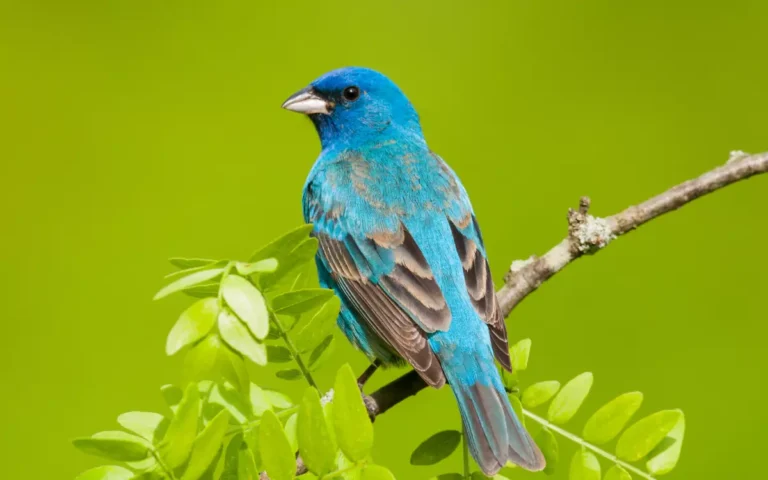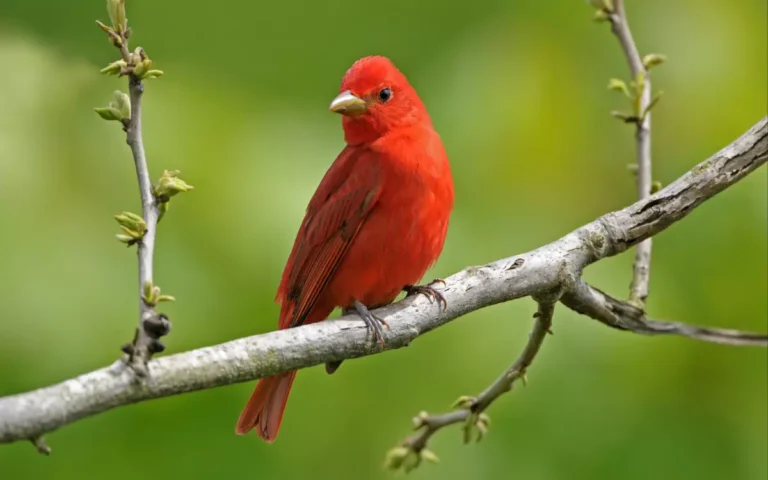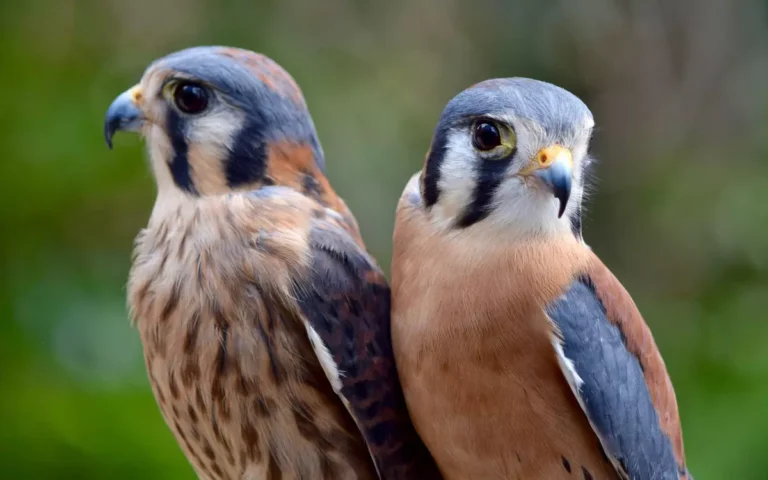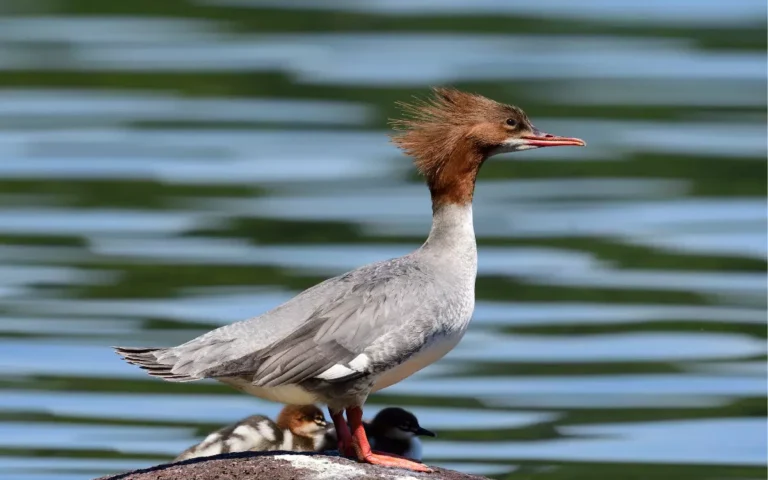14 Warblers In South Carolina: Photo & Id
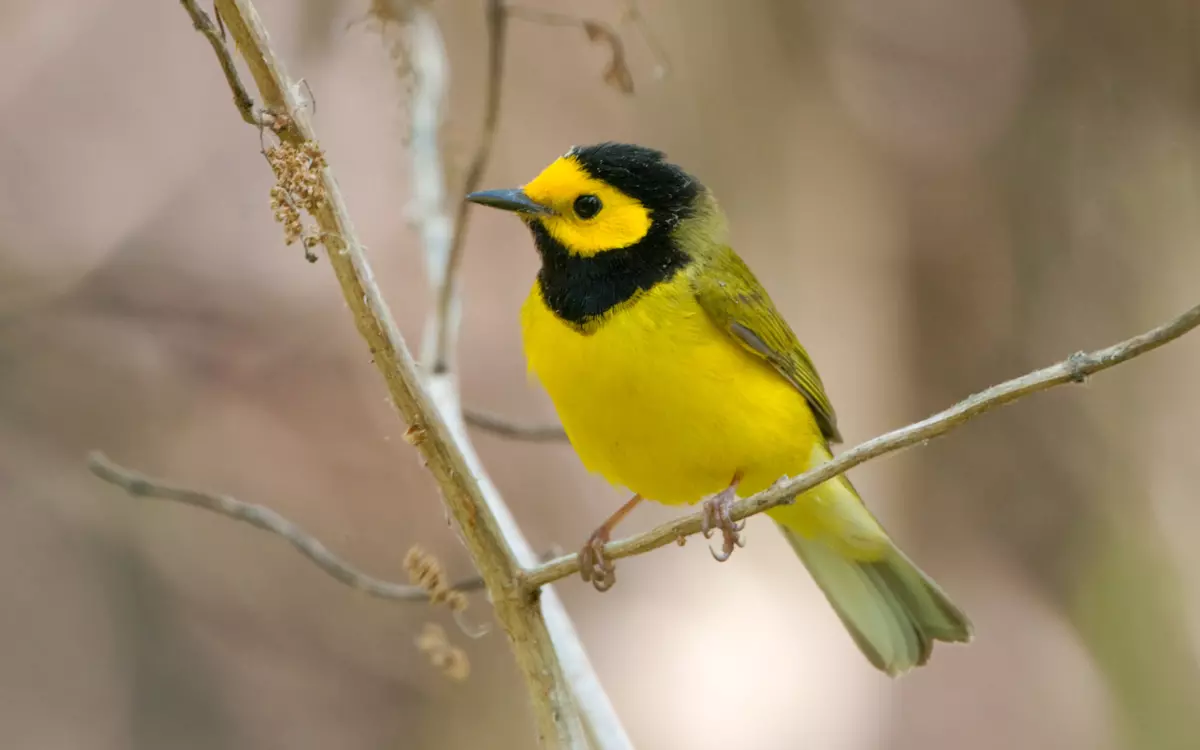
South Carolina has mostly seen 14 types of warbler. With its diverse habitats, the state hosts an array of colorful, melodious warblers, captivating visitors with their beauty and songs.
Warblers Overview:
Warblers are small, colorful birds known for their bright plumage and sweet songs. They are mostly insectivores, which means they love to eat insects. Warblers use their sharp beaks to catch bugs like caterpillars and flies. Sometimes, when insects are hard to find, they will eat berries and fruits too.
These birds are very active and often move around in quick, flitting movements as they search for food. Warblers are also known for their migratory behavior, traveling long distances between their breeding and wintering grounds. Their vibrant colors and lively behavior make them a favorite among birdwatchers.
All 14 warblers each bird information :
1. American Redstart (Setophaga ruticilla):
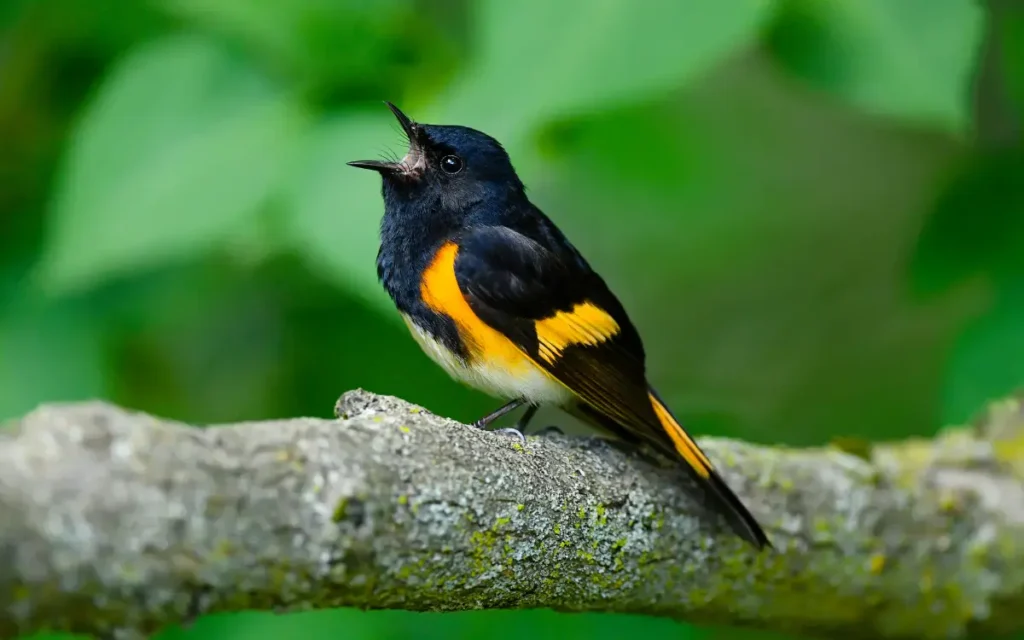
American Redstarts are small, colorful birds. The males have black feathers with bright orange patches, while females are olive-gray with yellow patches. They mainly eat insects like caterpillars flies, and sometimes berries.
These birds build their nests in trees or shrubs, close to the trunk. The nest is cup-shaped and made of bark and grass. They lay up to five eggs, which hatch in about two weeks.
Fun Fact: American Redstart parents feed their chicks in a unique way, making sure all the chicks get enough food.
2. Pine Warbler (Setophaga pinus):
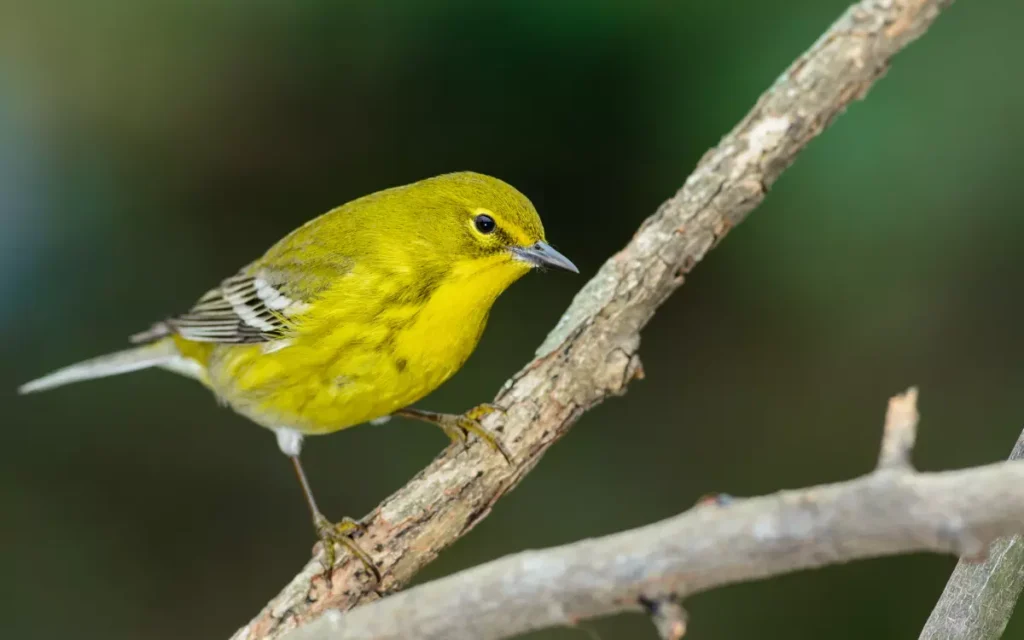
Pine Warblers are small birds mostly found in pine forests. They have olive-green backs and yellowish underparts. Males have brighter colors compared to females.
Their diet mainly consists of insects, seeds, and fruits. Pine Warblers often forage in pine trees, searching for food among the needles.
These birds build their nests in pine trees, usually on a horizontal branch. The nest is made of grass, pine needles, and spider webs. They lay around 3 to 5 eggs, which hatch in about 10 days.
Fun Fact: Pine Warblers are one of the few warblers that can eat seeds, which helps them survive in their pine forest homes.
3. Prothonotary Warbler (Protonotaria citrea)

Prothonotary Warblers are small birds with bright yellow bodies and blue-gray wings and tails. They have thick black beaks and white under their tails.
Their diet consists of insects, spiders, and snails. They forage near streams and wet woodlands.
These birds nest in abandoned woodpecker holes in trees near water. The male places moss in the hole, and the female makes a cup-shaped nest from grass and leaves. They lay up to seven eggs, which hatch in about two weeks.
Fun Fact: The name “Prothonotary” comes from the bright yellow robes worn by Roman Catholic church officials, similar to the bird’s yellow color.
4. Black-and-white Warbler (Mniotilta varia):

Black-and-white Warblers are unique birds with striking black-and-white striped patterns. Males have a larger black patch on their face, while females are slightly lighter in color.
Their diet includes insects like caterpillars and beetles. They are known for foraging up and down tree trunks and branches, similar to woodpeckers.
These warblers nest on the ground or close to it, using leaves and grass to build a cup-shaped nest. They lay 4 to 5 eggs, which hatch in about 10 days.
Fun Fact: Black-and-white Warblers have a distinctive way of moving, often seen hitching up and down tree trunks in search of food.
5. Yellow Warbler (Setophaga petechia):
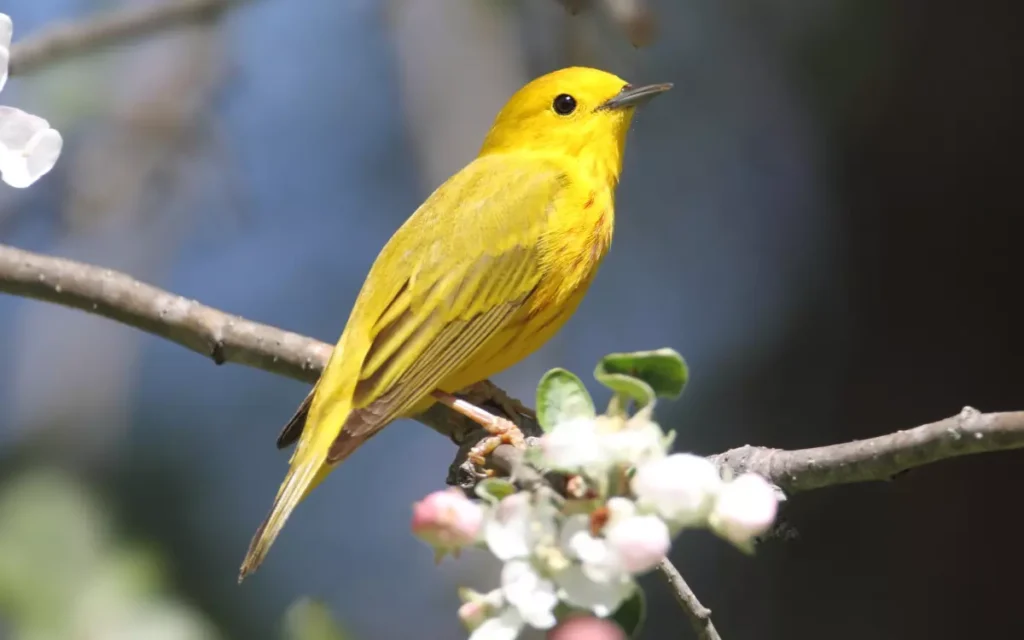
Yellow Warblers are small birds with bright yellow feathers. Males have reddish streaks on their chests, while females are a paler yellow.
Their diet mainly consists of insects, such as caterpillars and flies. They catch these insects by foraging in bushes and trees.
These warblers build their nests in shrubs or small trees, using grass and spider webs. The nest is cup-shaped, and they lay 4 to 5 eggs. The eggs hatch in about 11 days.
Fun Fact: Yellow Warblers are known for their sweet, musical song, which sounds like “sweet-sweet-sweet, I’m so sweet”.
6. Common Yellowthroat (Geothlypis trichas):
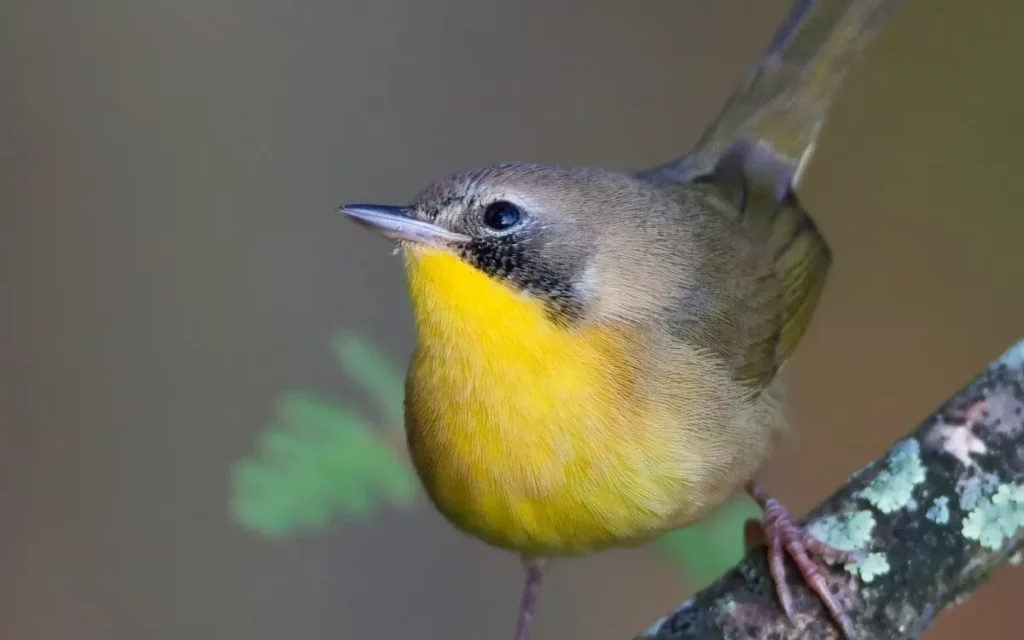
Common Yellowthroats are small songbirds with brownish backs and bright yellow undersides. Males have a distinctive black mask across their faces.
Their diet includes insects and spiders, often found in marshy or wetland areas. They forage in thick vegetation close to the ground.
These birds build their nests near the ground in marshy areas, using grass and sedges to create a cup shape. They lay up to 6 eggs, which hatch in about two weeks.
Fun Fact: The black mask of the male Common Yellowthroat is a key feature used in courtship and territory defense.
7. Northern Parula (Setophaga americana)
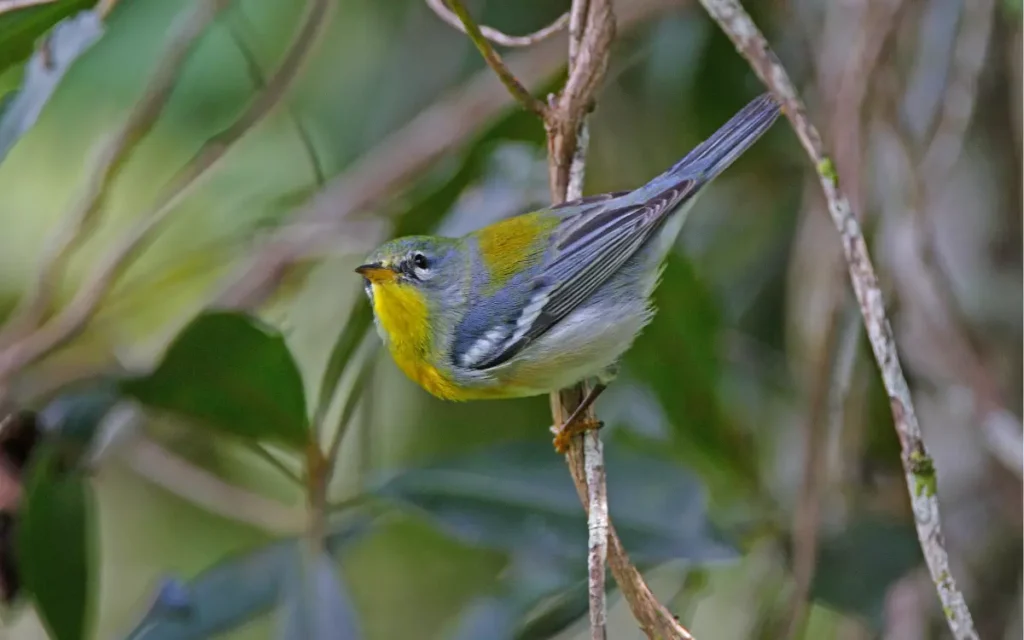
Northern Parulas are small birds with blue-gray feathers on top and white bellies with yellow patches. They are most active high in the forest canopy.
Their diet consists of insects and small invertebrates. They forage among moss and lichen in the treetops.
These birds nest in hanging mosses or beard lichen, creating a clump-shaped nest. They lay around 4 to 5 eggs, which hatch in about two weeks.
Fun Fact: Northern Parulas have different songs depending on their location. Eastern birds have a nasal buzzing trill, while western birds’ songs are longer and less buzzy
8. Magnolia Warbler (Setophaga magnolia)
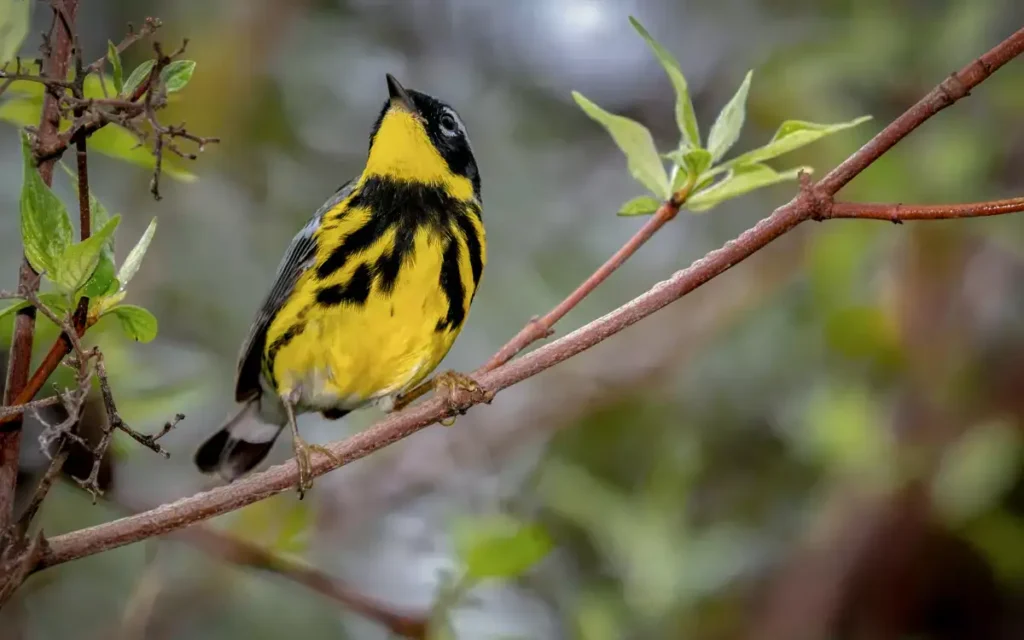
Magnolia Warblers are small birds with yellow bellies and black and white stripes on their backs. They have long tails with white patches.
They eat insects and small invertebrates, often found in forests and wooded areas. They forage in the treetops and sometimes lower in the bushes.
These birds nest on the ground or low in bushes, using grass and twigs to build a cup-shaped nest. They lay 3 to 5 eggs, which hatch in about 12 days.
Fun Fact: Magnolia Warblers have two different songs, one for courtship and one for marking their territory.
9. Yellow-rumped Warbler (Setophaga coronata)
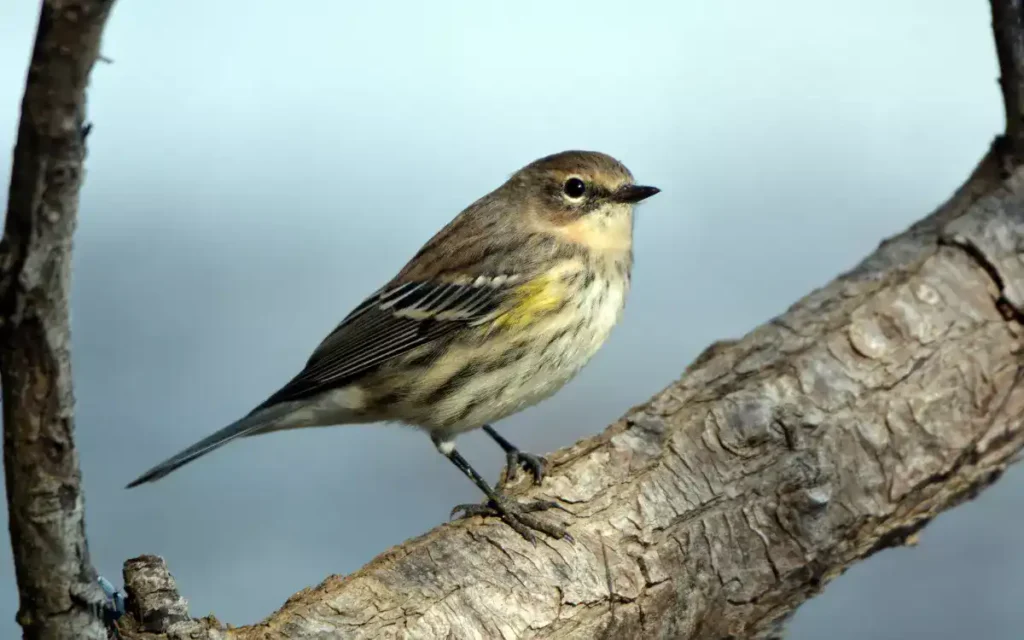
Yellow-rumped Warblers are small birds with yellow patches on their rumps, sides, and crowns. They have a mix of gray, black, and white feathers.
Their diet includes insects, fruits, and seeds. They are known for their adaptability in foraging in various habitats.
These birds build their nests in trees or shrubs, using grass and twigs to create a cup shape. They lay 3 to 5 eggs, which hatch in about 12 days.
Fun Fact: Yellow-rumped Warblers can digest the waxes in berries, which allows them to survive in colder climates where insects are scarce.
10. Black-throated Blue Warbler (Setophaga caerulescens)
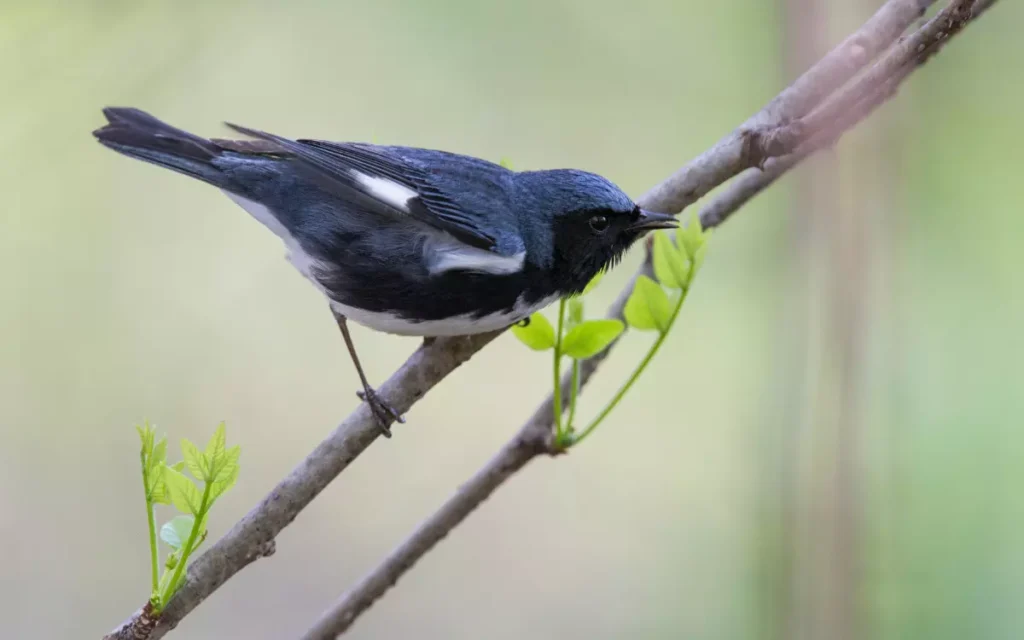
Black-throated Blue Warblers are small birds with distinct colors. Males have black throats and blue feathers, while females are olive-brown with white eyebrow.
Their diet consists of insects like caterpillars and flies. They forage in the understory of forests, often in dense thickets.
These birds build their nests low in bushes or small trees, using grass, bark, and spiderwebs. They lay 3 to 4 eggs, which hatch in about 12 days.
Fun Fact: Despite their name, Black-throated Blue Warblers are more easily identified by their white belly and square tail than their throat color.
11. Palm Warbler (Setophaga palmarum)

Palm Warblers are small birds with brown and yellow feathers. They have a distinctive bobbing tail movement.
Their diet mainly consists of insects, but they also eat berries and seeds. They forage on the ground or in low bushes.
These birds build their nests on the ground, using grass and moss to create a cup shape. They
lay 4 to 5 eggs, which hatch in about 10 days.
Fun Fact: Palm Warblers are one of the first warbler species to arrive in their breeding grounds in the spring and one of the last to leave in the fall.
12.Ovenbird (Seiurus aurocapilla)
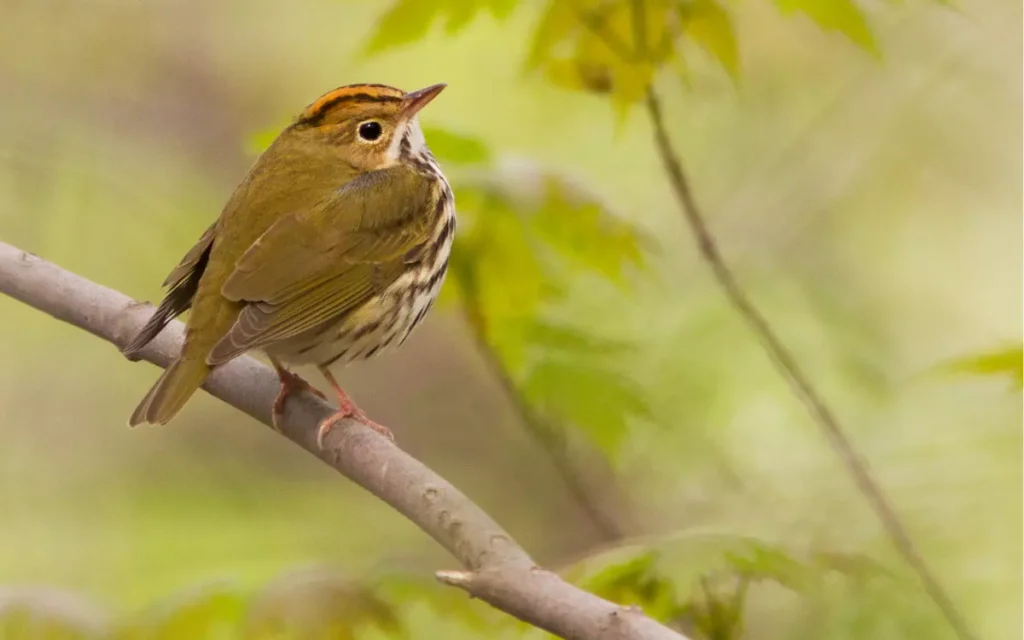
Ovenbirds are small, ground-dwelling birds with olive-brown feathers and white bellies streaked with black. They have a distinctive orange stripe on their heads.
Their diet mainly consists of insects and spiders, which they find on the forest floor. They are known for their jerky walk as they forage.
These birds build their nests on the ground, using leaves and grass to form a dome shape, resembling an oven. They lay 3 to 6 eggs, which hatch in about 12 days.
Fun Fact: Ovenbirds are named for their unique nest shape and are often mistaken for thrushes due to their larger size compared to other warblers.
13. Hooded Warbler (Setophaga citrina)
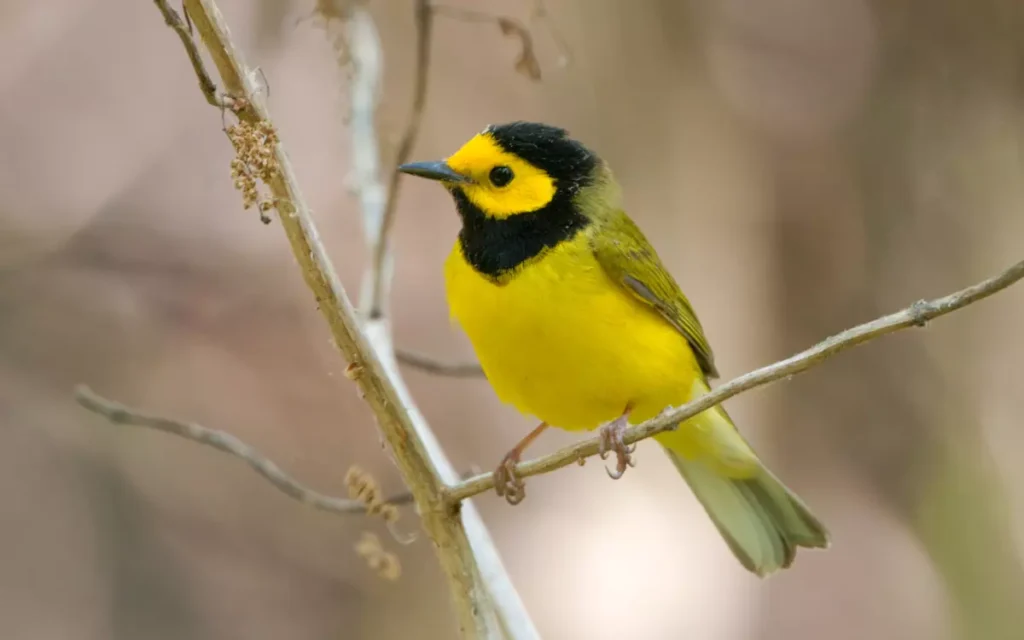
Hooded Warblers are small birds with bright yellow faces and underparts. Males have a distinctive black hood and throat, while females and young birds are more yellow without the black markings.
Their diet includes insects and spiders, which they find in forests with dense understories.
These birds build their nests in shrubs or low branches, using bark, grass, and plant material. They lay 3 to 5 eggs, which hatch in about 12 days.
Fun Fact: Hooded Warblers have white spots on their tails, which are thought to startle insects, making them easier to catch.
Related aricle:
14. Cape May Warbler (Setophaga tigrina)

Cape May Warblers are small birds with distinctive coloring. Males have a yellow belly and chestnut cheek patches, while females are more subdued with olive backs and yellow underparts.
Their diet mainly consists of insects, particularly during the breeding season. They are known for their unique method of drinking nectar from flowers, similar to hummingbirds.
These birds build their nests in coniferous trees, using grass, moss, and spiderwebs. They lay 4 to 9 eggs, which hatch in about 12 days.
Fun Fact: Cape May Warblers are named after Cape May, New Jersey, where they were first observed, but they are actually rare visitors to that area.
Habitats and Distribution of Warblers in South Carolina:
Warblers in South Carolina can be found in various habitats. They live in forests with lots of trees and bushes, shrubby areas with dense vegetation, and water-associated habitats like wetlands and marshes. These places offer food, shelter, and nesting spots for warblers.
Different warbler species are found in different parts of South Carolina. For example, Magnolia Warblers prefer forests with tall trees, while Common Yellowthroats are often seen in wetlands. The distribution of warblers depends on their specific habitat needs and the availability of food.
Diet and Feeding Habits of Warblers:
Warblers are mostly insectivorous, which means they eat a lot of insects. They help control pests by eating insects like caterpillars, moths, beetles, and flies. This is great for plants and crops because it reduces the need for pesticides.
Some warbler species also eat berries and fruits, especially during migration or in colder months when insects are scarce. This helps them survive when their main food source is not available.
By eating insects and sometimes berries, warblers play an important role in their ecosystems. They help control insect populations and spread seeds from the fruits they eat.
Songs and Vocalizations of Warblers:
Warblers are known for their varied and distinctive songs. Each species has its unique song pattern, which they use for attracting mates and marking their territory. These songs are a beautiful part of nature, especially in places like South Carolina, where you can also hear the calls of south carolina herons.
Vocalizations are important for communication among warblers. They use different sounds to warn others of danger, find their mates, or talk to their chicks. During mating season, males sing more often to show off to females.
By listening to warblers, we can learn a lot about their behavior and how they live in the wild
Migration Patterns of Warblers:
Warblers are known for their migratory behavior. Many species travel long distances during specific seasons, mainly in spring and fall. They move between their breeding grounds in North America, including places like South Carolina, and their wintering grounds in Central or South America.
During migration, warblers can be seen in various habitats, making stops to rest and feed. This journey is important for their survival, as it allows them to find the best conditions for breeding and avoiding harsh weather.
Just like south carolina falcons, warblers are fascinating to observe during their migration, showcasing the incredible journeys that birds undertake each year.
Conservation Efforts for Warblers:
Warblers, like the hummingbirds of south carolina, face habitat loss and climate change challenges. In South Carolina, efforts are underway to protect their habitats.
Conservation includes creating protected areas, restoring natural environments, and promoting sustainable practices. These actions help ensure safe places for warblers to live, breed, and migrate.
FAQS:
Q: What is the official bird of South Carolina?
Ans: The official bird of South Carolina is the Carolina Wren.
Q: What is South Carolina best known for?
Ans: South Carolina is best known for its historic cities, beautiful beaches, and as the birthplace of sweet tea and barbecue.
Q: What is the capital bird of South Carolina?
Ans: South Carolina does not have a “capital bird,” but its state bird is the Carolina Wren.
Q: What animal is South Carolina known for?
Ans: South Carolina is known for various animals, including white-tailed deer, loggerhead sea turtles, and the Carolina Wren.
Q: What are 3 interesting facts about South Carolina?
Ans:
- South Carolina was the first state to secede from the Union during the Civil War.
- The state is the largest producer of peaches in the Southern United States.
- Charleston, SC, is home to the first public library in America, established in 1698.
Conclusion:
warblers in South Carolina are important and colorful birds with diverse habitats. They face challenges like habitat loss but are protected through conservation efforts to ensure their survival


